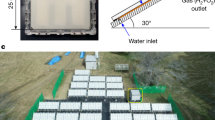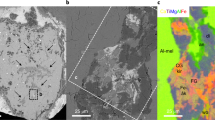Abstract
THE new observations reported by Gringauz and Bridge appear to confirm each other and, if they are correct, the resulting hydrogen accretion-rate will certainly be too small to account for the bulk of terrestrial hydrogen. Moreover, it is now certain that terrestrial deuterium is definitely not due to a slow accretion of solar deuterium. The previously proposed rate of deuterium production at the solar surface (3.3 × 1011 atoms cm.−2 sec.−1) through neutron capture by hydrogen would imply a flux of 2.2-MeV. gamma radiation of 3.5 × 106 photons cm.−2 sec.−1 at the orbit of the Earth, whereas Northrop and Hostetler1 have set an upper limit of only 0.5 photon cm.−2 sec.−1 for this flux. It seems inescapable that terrestrial deuterium was produced in situ by neutron irradiation of terrestrial hydrogen at an early stage in the evolution of the solar system, as proposed by Fowler et al.2. In view of these considerations, and the difficulties raised by oxygen supplies, the suggestion I made earlier concerning the origin of the oceans has lost all plausibility and I wish to withdraw it.
This is a preview of subscription content, access via your institution
Access options
Subscribe to this journal
Receive 51 print issues and online access
$199.00 per year
only $3.90 per issue
Buy this article
- Purchase on SpringerLink
- Instant access to full article PDF
Prices may be subject to local taxes which are calculated during checkout
Similar content being viewed by others
References
Northrop, and Hostetler, Bull. Amer. Phys. Soc., R, 9 1 (1961).
Fowler, W. A., Greenstein, J. L., and Hoyle, F., Amer. J. Phys., 29, 393 (1961).
Author information
Authors and Affiliations
Rights and permissions
About this article
Cite this article
DE TURVILLE, C. Terrestrial Accretion from the Solar Wind. Nature 194, 42 (1962). https://doi.org/10.1038/194042a0
Issue date:
DOI: https://doi.org/10.1038/194042a0
This article is cited by
-
Weather and the Earth's magnetic field
Nature (1974)



